Call me back
Please let us know how we can contact you and a suitable time to get in touch.
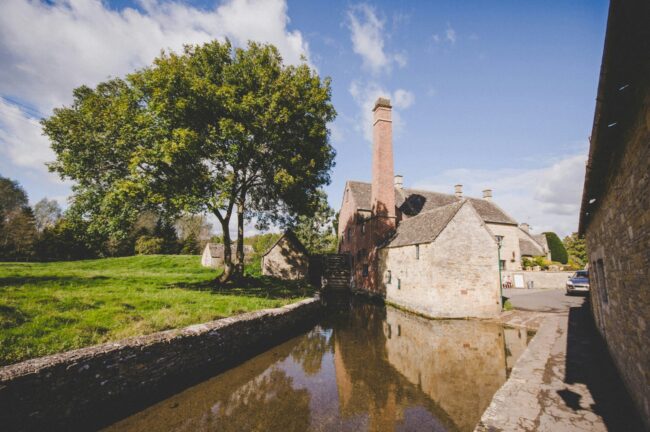
17 October 2024
Sleaford is a picturesque market town nestled in the heart of South Lincolnshire’s rural countryside, offering visitors a quintessential taste of English rural life. The town’s skyline is dominated by the impressive spire of St Denys’ Church, one of the tallest stone spires in England, which serves as a landmark for both locals and tourists alike. The town has long been synonymous with market life, with its market square at the centre hosting bustling markets that have been a staple for centuries, selling a variety of local produce.
Sleaford’s history is rich and varied, tracing back to its origins in the Iron Age when it served as a tribal centre for the Corieltauvi tribe. This early settlement was strategically located where a prehistoric track crossed the River Slea, playing a crucial role in the town’s development. The Corieltauvi were primarily farmers, and their settlement in Sleaford was likely one of their key tribal centres.
The presence of a mint during the 1st centuries BC and AD underscores Sleaford’s significance in regional trade and governance. This mint might have been responsible for producing coins that bore the names of tribal leaders, indicating a structured society with complex economic activities. Archaeological evidence suggests that Sleaford could have been one of the largest settlements in the Corieltauvian territory between 50 BC and AD 50.
Excavations have revealed a wealth of Iron Age artefacts, including pottery, animal remains, and evidence of metalworking. The site appears to have consisted of at least five enclosures and three structures, hinting at a well-organised community. The discovery of crucibles and moulds used for producing silver pellets suggests that the mint was an important feature of this settlement.
The Roman invasion of Britain in AD 43 marked a significant turning point for Sleaford. While the Corieltauvi did not resist the Romans, their way of life gradually integrated with Roman customs. Evidence of Roman settlements in the area includes remnants of buildings and infrastructure that indicate Sleaford’s continued importance as an economic centre. By the late Saxon period, Sleaford had become an established jurisdictional centre with a court and market. The town is first mentioned in a 9th-century charter when it was owned by Medehamstede Abbey in Peterborough, a Mercian royal foundation.
The Saxons further developed Sleaford’s infrastructure, establishing it as an economic hub with connections to other significant settlements. This period saw the construction of key buildings and fortifications that laid the groundwork for its medieval expansion.
The medieval era saw the differentiation between Old and New Sleaford. Old Sleaford, based near the site of the prehistoric settlement, began to decline as New Sleaford emerged by the 12th century around the present-day marketplace and St Denys’ Church. It was during this period that Sleaford Castle was constructed for the Bishops of Lincoln, who owned the manor. The castle served as an administrative centre for managing ecclesiastical estates.
The granting of market rights in the mid-12th century allowed New Sleaford to flourish as a market town, becoming locally important in the wool trade. This economic prosperity attracted merchants and craftsmen, further boosting its growth and development.
In the late 15th and early 16th centuries, the manor of Old Sleaford was owned by the Hussey family until John Hussey was executed for treason during the Lincolnshire Rising. The manor then passed to Robert Carre, whose family had a lasting impact on Sleaford’s development. The Carre family founded several institutions, including Carre’s Grammar School in 1604 and Sleaford Hospital in 1636. Their influence continued through marriage into the Hervey family, who retained control of local estates until the 1970s.The Carres were instrumental in shaping modern Sleaford through their philanthropic efforts and investments in local infrastructure.
Their legacy is evident in many historical buildings that still stand today, serving as reminders of their enduring impact on the town’s cultural and economic landscape.
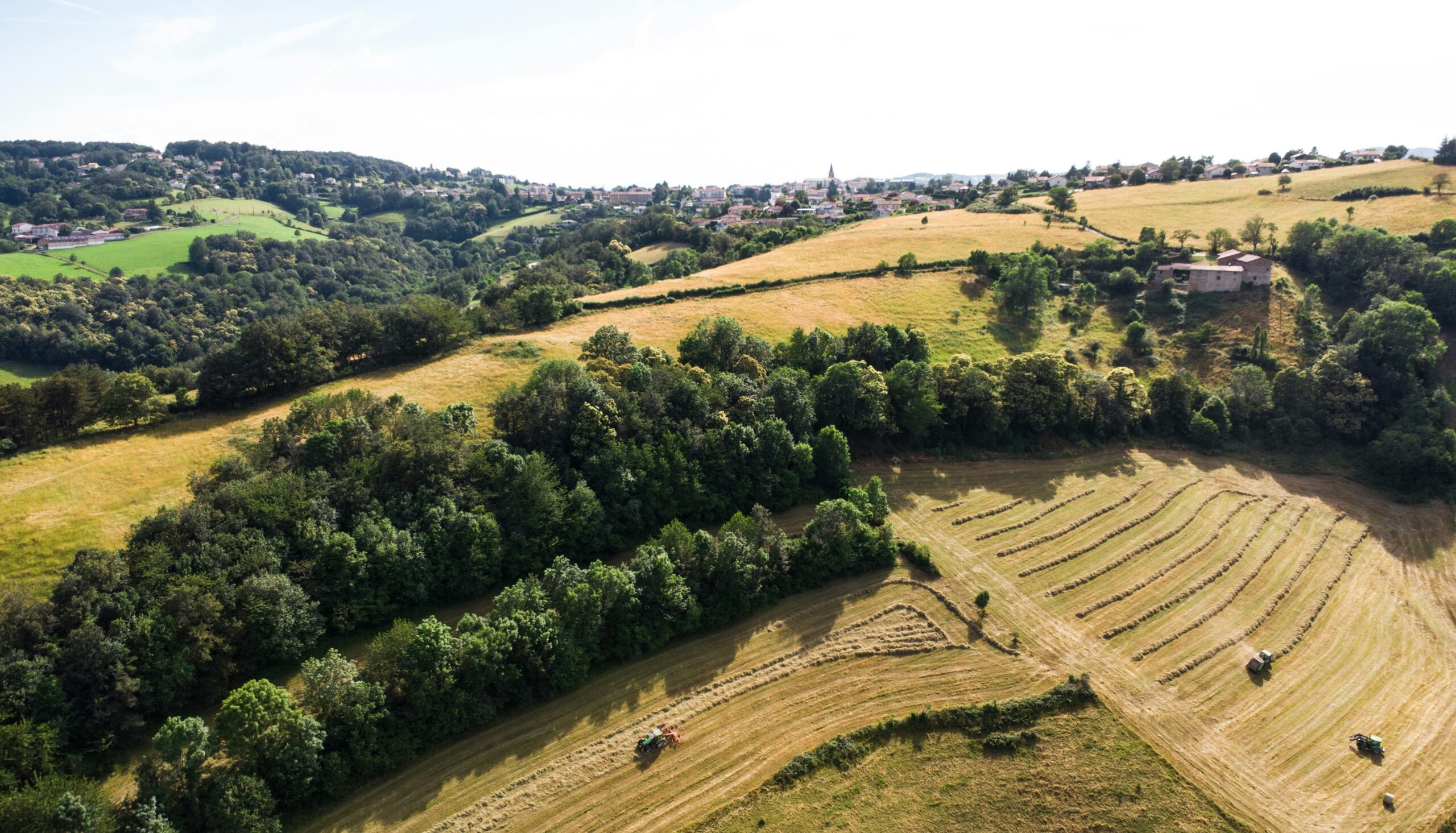
Sleaford is strategically positioned in the heart of Lincolnshire, offering a blend of rural charm and urban accessibility. Situated approximately 11 miles northeast of Grantham and 17 miles south of Lincoln, it serves as a convenient base for exploring the broader region. The town benefits from excellent road connections, with the A17 and A15 providing direct routes to nearby cities, facilitating easy travel for residents and visitors alike. The A17, in particular, is a key route linking Newark-on-Trent to King’s Lynn, passing through the picturesque fen landscapes of Lincolnshire.
This accessibility is complemented by a robust public transport network, including principal bus routes to Lincoln and Grantham. The CallConnect service operates six days a week, offering flexible transport options across Sleaford and its surrounding areas, ensuring all residents can travel with ease.
Sleaford is located on the edge of the expansive Lincolnshire Fens, a unique landscape characterised by flat, low-lying wetlands. This natural setting not only defines the local geography but also supports a diverse range of wildlife, making it an attractive area for nature enthusiasts. The Fens are renowned for their seasonal beauty; in winter, they host large flocks of wildfowl, while spring and summer bring the songs of skylarks and warblers.
The surrounding countryside offers picturesque views and opportunities for outdoor activities such as walking, cycling, and bird watching. Local nature reserves like Mareham Pastures provide tranquil spaces with wildflower meadows and woodland paths. These reserves are equipped with amenities like all-weather paths suitable for wheelchairs and buggies, ensuring accessibility for all visitors.
The combination of rich biodiversity and accessible natural spaces makes Sleaford an ideal destination for those seeking to connect with nature.
The River Slea winds through the town, playing a significant role in its historical development and present-day charm. The river provides scenic walking paths along its banks, offering tranquil spots for relaxation and recreation. Historically, the river was integral to Sleaford’s economy, supporting trade and industry through its navigation system.
Sleaford enjoys a temperate maritime climate typical of much of the UK, with mild summers and cool winters. The town experiences moderate rainfall throughout the year, which contributes to the lush greenery of its surrounding landscapes. This climate supports agricultural activities in the region, further enhancing Sleaford’s reputation as a hub for local produce.
St Denys’ Church stands as one of the most iconic structures in Sleaford, renowned for its impressive 144-foot stone spire, which ranks among the tallest in England. The church’s origins trace back to around AD 1180, with the addition of its broach spire in 1200, making it one of the earliest examples of such architecture in the country.
The church is a prime example of Decorated Gothic architecture. The 14th-century nave, aisles, and north transept showcase intricate window tracery that has been praised for its complexity and beauty. Inside, visitors can admire a 15th-century rood screen and a communion rail thought to have been designed by Sir Christopher Wren. The church also houses several ornate memorials dedicated to the Carre family, influential lords of the manor during the 17th century.
St Denys’ Church has a storied history, reflected in its architectural evolution. Originally part of an Anglo-Saxon settlement mentioned in the Domesday Book, the church was rebuilt in stages, incorporating elements from various periods. The tower and spire were largely rebuilt in 1884 after being struck by lightning, preserving their historical integrity.
As a Grade I listed building, St Denys’ remains an active parish church, serving as a focal point for community worship and events. Its historical significance is complemented by its role as a living part of Sleaford’s community fabric. The church is open daily to visitors, offering a serene space for reflection and exploration of its rich heritage.
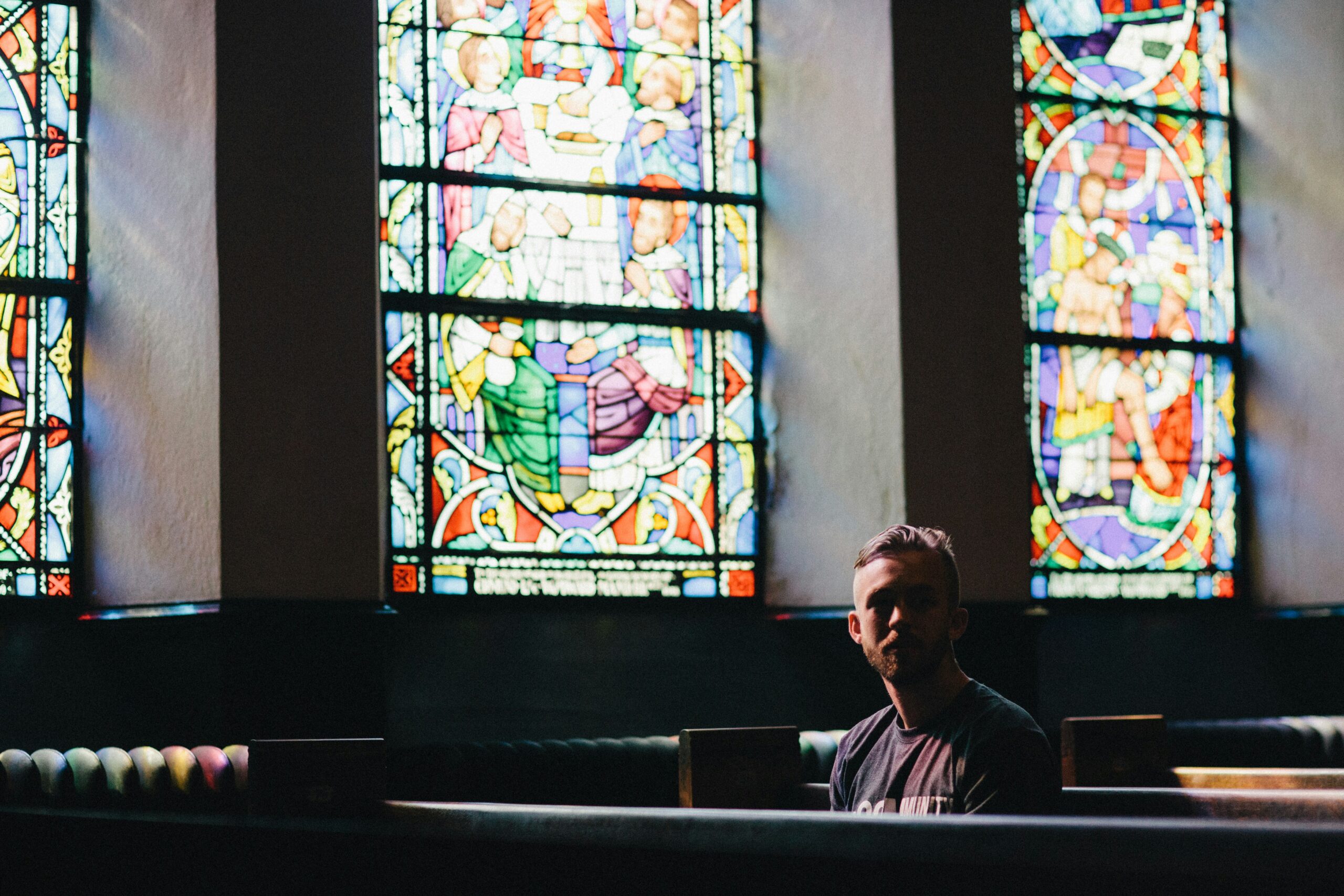
Located on Northgate, the Manor House in Sleaford is a fascinating architectural ensemble often described as “a jigsaw puzzle” due to its complex history and structure. This building is a testament to the rich historical tapestry of Sleaford, with parts of it dating back to the 16th century. The Manor House incorporates medieval masonry likely sourced from nearby Sleaford Castle, adding layers of historical intrigue to its construction.
The architectural style of the Manor House is a blend of various periods, reflecting the changes and adaptations it has undergone over centuries. It features Georgian additions that bring a sense of elegance and symmetry, while Gothic-Revival elements add dramatic flair and intricate detailing.
Historically, the Manor House served as a private residence for prominent local families, playing a significant role in the social and economic life of Sleaford. Today, it has been thoughtfully converted into a mix of commercial properties and residential apartments, allowing it to remain a vital part of the community.
One of the standout features of the Manor House is its cobbled courtyard, which evokes the charm of bygone eras. The 19th-century Gothic west front, complete with a small tower, adds to its architectural allure. This combination of styles and historical influences makes the Manor House not just a building but a living record of Sleaford’s evolution over time.
Cogglesford Watermill is an award-winning site situated just over half a mile from Sleaford town centre, nestled on the banks of the River Slea. This historic mill is thought to be the only Sheriff’s watermill still operational in England, with origins dating back to medieval times. Its continued operation offers visitors a rare glimpse into traditional milling processes that have been preserved through careful restoration.
The mill provides milling demonstrations on specific days, allowing visitors to see first-hand how grain is transformed into flour using age-old techniques. Adjacent to the mill is a charming café that serves delicious meals and snacks, making it an ideal spot for both locals and tourists to relax and enjoy the picturesque setting. The tranquil surroundings of Cogglesford Watermill make it a popular destination for those seeking both historical insight and natural beauty.
Although mostly in ruins today, Sleaford Castle remains an important historical site in Lincolnshire. Constructed around 1123 by Bishop Alexander of Lincoln, it was primarily used for administering the Bishop’s estates. The castle’s most notable historical moment came in October 1216 when King John stayed there shortly before his death. This connection to significant historical events adds depth to its narrative.
Today, visitors can explore the remnants of its walls and earthworks that hint at its former grandeur. Despite its ruined state, Sleaford Castle offers an evocative glimpse into medieval life and architecture. Efforts to preserve and interpret the site continue, ensuring that its historical significance is not lost to time.
Money’s Mill is another distinctive building in Sleaford, known for its towering presence beside the Slea Navigation canal. This Grade-II listed structure dates back to before 1798 and was originally depicted with a broad reefing stage, squat ogee cap with fantail, and four common sails. It operated until 1895 when financial difficulties led to its closure.
After falling into disrepair, Money’s Mill was restored in 2007 by John & Isola Partridge, who transformed it into a café known as Curio Café. This unique setting within a parking area has retained much of its historical character while serving as a modern gathering place for residents and visitors alike.
These architectural highlights reflect Sleaford’s rich history and diverse stylistic influences. Each structure offers visitors a glimpse into different aspects of the town’s past through their preserved forms and storied backgrounds. Whether exploring ancient ruins or enjoying contemporary adaptations within historic buildings, Sleaford provides an engaging journey through time for anyone interested in history and architecture.
Sleaford’s economy has deep historical roots, originally centred around its strategic location along the River Slea. This river was crucial in facilitating the development of numerous mills, which were pivotal to the town’s economy during medieval times. These mills not only supported local agriculture but also powered industries such as cloth production and grain milling. The presence of these mills, combined with a thriving market, established Sleaford as a regional economic hub. The granting of a market charter in the 12th century further solidified its role as an important market town, attracting traders and craftsmen from across the region.
The town’s market became a focal point for commerce, where goods ranging from wool to agricultural produce were traded. This vibrant market culture laid the foundation for Sleaford’s economic prominence in the medieval period. The town’s strategic position also allowed it to serve as a conduit for goods travelling between larger cities, enhancing its economic significance.
The construction of the Slea Navigation Canal in the early 18th century marked a significant shift in Sleaford’s economic landscape. This development allowed for increased trade and industrial activity by providing a reliable means of transporting goods. The canal facilitated the movement of bulky materials such as coal and agricultural produce, which were essential for local industries.
This period saw the rise of engineering firms specialising in steam-powered agricultural machinery, which became integral to Sleaford’s industrial growth. The canal head and Carre Street emerged as focal points for industrial development, hosting various manufacturing enterprises that capitalised on the improved transport links. These businesses not only served local needs but also exported machinery and equipment to other parts of the country.
The arrival of the railway in the mid-19th century transformed Sleaford’s industrial landscape once again. It provided faster and more efficient transportation options, connecting Sleaford to major cities and markets across England. This connectivity facilitated the establishment of the Bass Maltings complex, which became a nationally significant site for malting operations.
The railway also spurred the growth of seed companies like Hubbard and Phillips and Sharpes International. These firms expanded their reach to international markets, exporting seeds and agricultural products worldwide. The railway infrastructure supported this expansion by ensuring timely delivery and reducing transportation costs.
Today, Sleaford’s economy is diverse, blending traditional industries with modern enterprises. The town supports sectors such as retail, healthcare, and public administration, providing employment opportunities for residents. The industrial estate to the north has become a centre for contemporary industry, housing various businesses that contribute to the local economy.
Sleaford has embraced technological advancements while maintaining its historical roots. Modern businesses in technology and services coexist with traditional manufacturing firms, creating a balanced economic environment that supports innovation and growth.
Agriculture remains a vital part of Sleaford’s economy due to its location on the edge of the fertile Lincolnshire Fens. This area is renowned for intensive arable farming, supported by nutrient-rich soils revealed through historical drainage efforts. Crops such as wheat, barley, and sugar beet thrive here, contributing significantly to both local consumption and export markets.
Although traditional markets have declined over time, local produce continues to play an essential role in Sleaford’s economic activities. Farmers’ markets and local food festivals celebrate this agricultural heritage by showcasing fresh produce and artisanal products from surrounding farms.
The community’s commitment to supporting local trade is evident in initiatives that promote farm-to-table dining experiences and sustainable agricultural practices. These efforts not only boost the local economy but also enhance community well-being by fostering connections between producers and consumers.
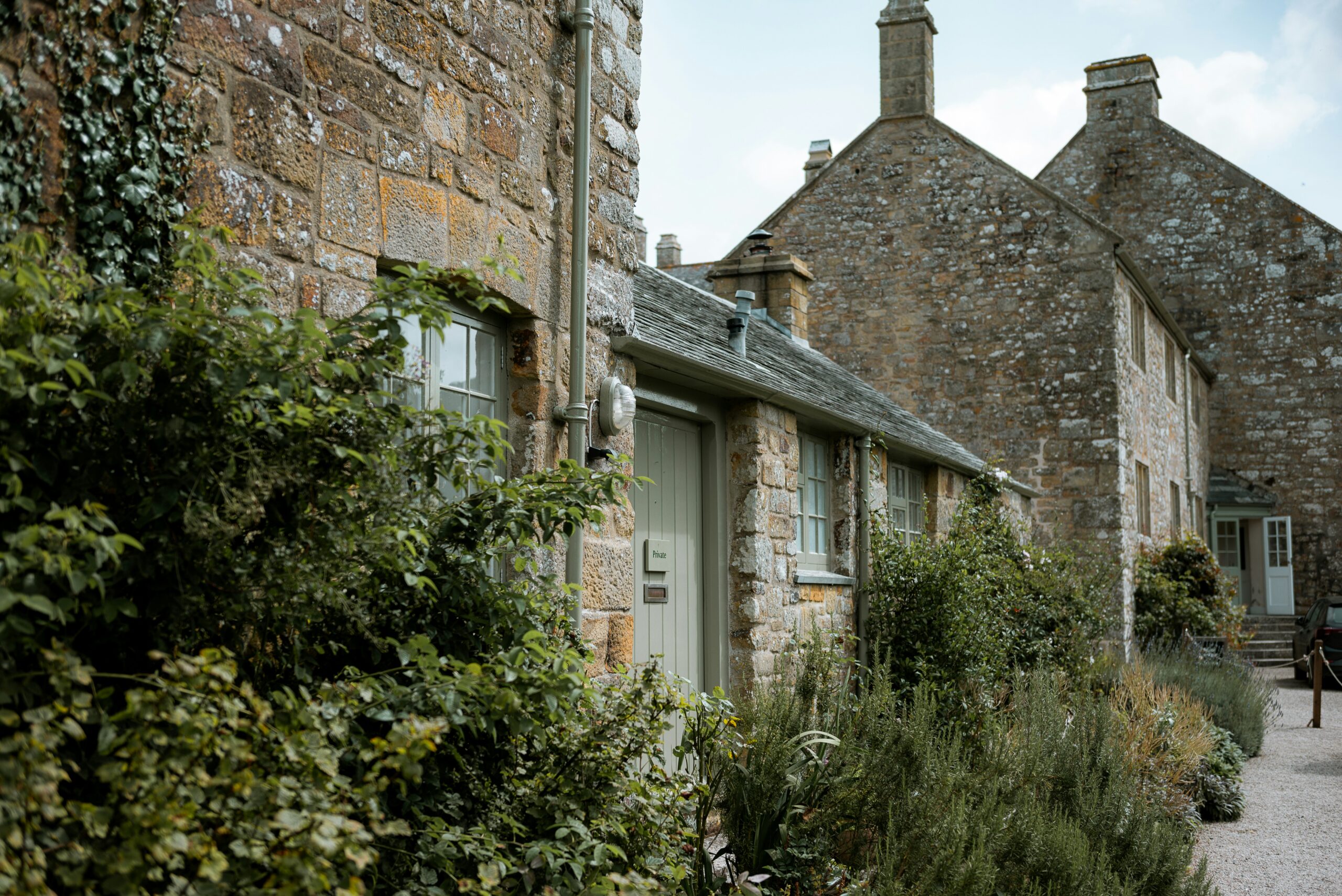
Sleaford Museum offers a captivating glimpse into the town’s rich history, providing an essential link between the past and present for both residents and visitors. Situated on the bustling high street, the museum is a treasure trove of artefacts and stories that highlight the unique past of Sleaford and its surrounding areas. The museum’s collection includes items from various periods, ranging from prehistoric tools and Roman relics to Victorian memorabilia and World War II artefacts. These exhibits paint a vivid picture of the town’s evolution over centuries.
The museum features frequently changing exhibitions, ensuring there’s always something new to discover. These exhibitions often focus on specific themes or periods, such as the industrial revolution in Sleaford, local folklore, or significant historical events that have shaped the town. This dynamic approach keeps the museum relevant and engaging, encouraging repeat visits from locals and tourists alike.
Entirely volunteer-run, Sleaford Museum relies on donations to support its operations. The dedication of its volunteers is evident in the meticulously curated displays and the warm welcome extended to all visitors. Admission is free, making it accessible to everyone interested in exploring Sleaford’s heritage. The museum is open on Mondays, Wednesdays, and Saturdays, providing ample opportunity for people to visit at their convenience. In addition to exploring the exhibits, visitors can purchase local history books, postcards, and other memorabilia from the museum shop, further supporting its mission.
Navigation House Visitor Centre is a Grade II listed building that was originally the office for the Sleaford Navigation Company, built in 1838. This historic site stands as a testament to the town’s industrial past linked to the canal system. The centre offers interactive exhibits suitable for all ages, showcasing the history of trade and transport along the River Slea. These exhibits include models of canal boats, historical documents, and multimedia presentations that bring the era of canal trade to life.
Visitors can explore restored Victorian offices within Navigation House, gaining insight into how business was conducted during this pivotal time in Sleaford’s history. The centre also highlights the engineering feats involved in constructing and maintaining the canal system, which played a crucial role in facilitating trade and boosting local commerce.
Educational programs at Navigation House cater to school groups and families, offering hands-on activities that teach about navigation techniques and historical trade practices. These programs are designed to engage young minds while fostering an appreciation for Sleaford’s industrial heritage.
Cogglesford Watermill is thought to be the only working Sheriff’s watermill in England, located just outside Sleaford town centre. This historic mill provides a unique window into traditional milling processes that have been preserved through careful restoration efforts. Open daily with free admission, Cogglesford Watermill invites visitors to step back in time and experience milling demonstrations on select days or watch videos detailing each step of the process.
The mill’s picturesque setting on the banks of the River Slea makes it a popular destination for those seeking both historical insight and natural beauty. The adjacent café offers a relaxing spot for refreshments, serving locally sourced snacks and beverages that complement a leisurely visit.
Cogglesford Watermill also hosts special events throughout the year, such as heritage open days and seasonal fairs. These events provide additional opportunities for visitors to engage with local history while enjoying family-friendly activities.
Known as The Hub (Sleaford), this centre is dedicated to contemporary craft and design. It boasts one of the largest exhibition spaces in England for this purpose, making it a key player in promoting modern artistic expression within Sleaford. With free admission, The Hub offers a variety of exhibitions that showcase innovative works by both emerging and established artists.
Visitors can participate in workshops designed to inspire creativity across all age groups. These workshops cover diverse topics such as textile arts, ceramics, digital design techniques, and more—providing hands-on experiences that foster artistic exploration.
Children’s activities at The Hub are tailored specifically towards younger audiences – encouraging them not only to observe but also actively engage with art through interactive installations or guided projects led by professional artists-in-residence.
Housed within a former seed warehouse — a nod towards its historical roots — The Hub seamlessly blends old-world charm with cutting-edge innovation; creating an inspiring environment where tradition meets contemporary creativity head-on.
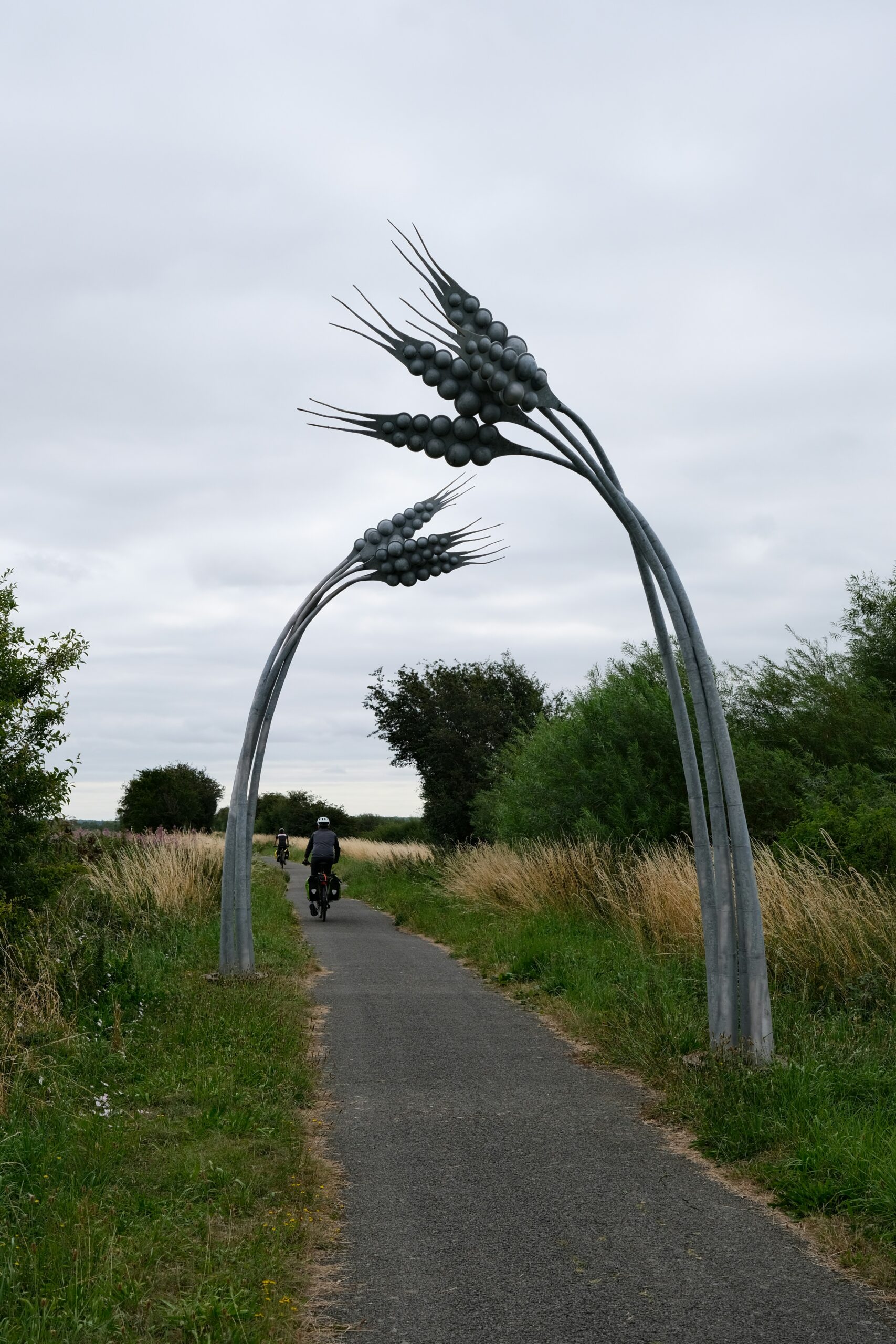
Lollycock’s Field is a cherished Local Nature Reserve located within walking distance of Sleaford’s town centre. This 2.15-hectare site, owned by North Kesteven District Council and managed by Hill Holt Wood, serves as a vital green space in the heart of the town. The reserve has evolved into a diverse habitat featuring rough semi-improved neutral and damp grassland, wetland areas including ponds, scrapes, and fen, as well as small patches of planted woodland and scrub. These varied environments support a wide array of wildlife, making Lollycock’s Field an ecological treasure trove.
The field‘s wetland habitat is particularly noteworthy, providing essential resources for local wildlife. The pond attracts a range of species, from invertebrates to birds such as mallards and herons. The creation of a new Kingfisher nesting bank and additional scrapes has enhanced the site’s capacity to support aquatic life. These efforts have not only improved the ecological value of the site but also its aesthetic appeal, offering visitors a serene setting for nature observation.
A significant aspect of Lollycock’s Field is its role in community engagement and education. The reserve is accessible via Eastgate, with parking available at nearby car parks on East Road and East Banks. This accessibility encourages frequent visits from locals and tourists alike, fostering a deeper appreciation for Sleaford’s natural heritage. Volunteer groups led by Hill Holt Wood Rangers meet regularly to maintain the reserve, carrying out activities such as planting native species, managing invasive plants, and enhancing habitats for wildlife.
Mareham Pastures is another significant Local Nature Reserve situated on the southern edge of Sleaford. Once a landfill site, it has been transformed into a vibrant area of wildflower meadows, new woodland, and open grasslands. This transformation was made possible through the collaborative efforts of Lincolnshire County Council and the Friends of Mareham Pastures.
The reserve offers numerous access points from surrounding residential areas, along with amenities such as a car park, picnic area, and sculptures that add artistic interest to the natural landscape. A 1-kilometre all-weather path suitable for wheelchairs and buggies ensures that Mareham Pastures is accessible to all visitors, promoting inclusivity in outdoor recreation.
The diverse habitats within Mareham Pastures support a range of wildlife, including butterflies and potentially barn owls. The wildflower meadows are particularly striking during spring and summer when they burst into bloom with species such as cowslip and ox-eye daisy. These floral displays not only enhance the visual appeal of the reserve but also provide crucial resources for pollinators.
Located to the north of the town, Sleaford Wood is an important community resource managed by the Woodland Trust. This broadleaf native woodland offers opportunities for walking and wildlife observation within its expansive setting. The wood is thought to have existed since the mid-18th century and now comprises diverse habitats that support various species.
While parking at Sleaford Wood is limited, it remains easily accessible to local residents who can enjoy its natural beauty and biodiversity. The Woodland Trust’s management plan aims to enhance the wood‘s ecological value by leaving dead wood in place for conservation purposes, providing habitat for insects and fungi that contribute to the forest ecosystem.
To the north-east of Sleaford lies Sleaford Moor, near the A17 and A153 Bone Mill Junction. This area provides additional open space for exploration and outdoor activities, contributing to the town’s network of natural attractions. Sleaford Moor offers expansive views of the surrounding countryside and opportunities for walking or cycling along its trails.
The River Slea runs through the heart of Sleaford, forming a green corridor that links the town with its surrounding countryside. Public footpaths along the river offer scenic walking routes and opportunities to observe local wildlife. The river’s historical significance as part of the Sleaford Navigation adds cultural depth to its natural beauty.
Sleaford is well-connected by road, with the A17 and A15 providing major routes that link the town to nearby cities such as Lincoln, Grantham, and Boston. These roads facilitate easy access for commuters and visitors, making Sleaford a convenient location for travel within Lincolnshire.
The local road network supports efficient travel within Sleaford and to surrounding villages, enhancing connectivity for residents.
Sleaford’s railway station is a key transport hub, offering regular services on the Nottingham to Skegness line and the Peterborough to Lincoln line. These routes provide direct connections to major cities, making rail travel a popular choice for both commuters and tourists.
The station is equipped with essential facilities for passengers, including waiting areas and ticket purchasing options, serving as a crucial link for those travelling beyond the immediate region.
A network of bus services operates within Sleaford, providing connections to nearby towns and rural areas. These services are vital for residents without access to private vehicles, ensuring mobility across the district. Regional bus services offer routes to larger cities, complementing the rail network and providing flexible travel options.
Sleaford promotes cycling as an eco-friendly mode of transport, with designated cycling paths that connect various parts of the town. These routes encourage sustainable travel and provide safe options for cyclists. The town’s compact size makes walking a practical option for short distances, with well-maintained footpaths ensuring pedestrian safety and accessibility.
With a population of over 19,000 as of 2021, Sleaford has experienced rapid growth due to affordable housing and quality educational facilities. The town’s community spirit is evident in its bustling markets, local events, and cultural activities that bring people together throughout the year.
One of the highlights of Sleaford’s community calendar is the annual RiverLight Festival, a vibrant celebration of the town’s culture and creativity. This multi-arts festival features a parade with participants from local schools and community groups, showcasing exquisite costumes and performances. The festival, which takes place across multiple venues including Eastgate Green, the Riverside Centre, and outside Sleaford Museum, transforms the town into a lively hub of artistic expression.
The RiverLight Festival includes a variety of activities such as dance, theatre, and music performances. It also features street theatre, live music, dance flash mobs, puppet shows, food stalls, and light projections. These events not only entertain but also bring the community together, fostering a sense of pride and belonging. The festival is supported by North Kesteven District Council and the UK Government through the UK Shared Prosperity Fund, highlighting its significance in strengthening social fabric and enhancing local pride.
In 2023, despite challenges like Storm Babet, the festival saw impressive engagement with 17,788 public interactions over eight days and an additional 24 community outreach days involving over 3,000 participants. This success underscores the festival’s role in boosting footfall and trade in Sleaford’s high street while providing residents with opportunities to express their creativity.
The Hub, also known as the National Centre for Craft & Design, plays a central role in Sleaford’s cultural scene. It hosts exhibitions, workshops, and activities that engage people of all ages in creative pursuits. The Hub collaborates with artists and local communities to develop unique projects that enhance the town‘s cultural offerings. From public art commissions to artist residencies and heritage-inspired projects, there is always something happening to inspire creativity and participation.
The Hub offers a dynamic learning programme that includes workshops on topics such as pottery glazing, silversmithing, calligraphy, and bookbinding. These workshops cater to diverse interests and skill levels, ensuring that everyone can find an activity that resonates with them. The Hub also delivers creative activities in schools and community settings, further embedding arts into everyday life in Sleaford.
As an Arts Council England National Portfolio Organisation supported by North Kesteven District Council, The Hub is committed to promoting contemporary craft and design both locally and nationally. Its exhibitions showcase works by artists from around the world, providing visitors with access to innovative art forms.
From public art commissions to artist residencies and heritage-inspired projects, there is always something happening to inspire creativity and participation.
Sleaford is home to numerous community-led initiatives that foster inclusivity and engagement. Projects like the Sleaford Youth Club Mural encourage young people to express themselves through art. This project involved collaboration with professional illustrator Ruth Burrows to create a mural that reflects participants‘ thoughts on their town and future. Such initiatives not only beautify public spaces but also empower participants by giving them a sense of ownership and pride.
The Hub‘s commitment to community engagement extends beyond art projects. It leads free sessions in craft and dance based on feedback from youth groups about their interests. Plans are underway to establish a Youth Forum to involve young people more deeply in programming decisions at The Hub.
Another notable initiative is the “When in Sleaford” Arts & Heritage Trail. This trail features bronze roundels created by artist David Mackie that act as way-markers around town. These artworks guide residents and visitors through Sleaford while highlighting its rich heritage. The Sleaford Civic Trust Heritage Trail complements this effort by offering insights into historical landmarks throughout Sleaford.
Sleaford offers an exceptional quality of life, enhanced by its well-maintained amenities and services. The town provides a diverse range of housing options, from charming period homes that exude historical character to modern developments equipped with contemporary conveniences. This variety caters to a wide array of preferences and needs, making it an attractive choice for both families and individuals.
One of the key factors contributing to Sleaford’s appeal is its low crime rates, which provide residents with a sense of security and peace of mind. This safe environment is particularly appealing to families looking for a nurturing place to raise children. Additionally, Sleaford boasts good-quality education facilities, including reputable primary and secondary schools that offer excellent academic and extracurricular programs. These institutions are committed to fostering a supportive learning environment that encourages student growth and achievement.
The town’s relatively affordable housing market is another significant draw for prospective residents. Compared to larger urban centres, Sleaford offers more accessible property prices, allowing individuals to find homes that suit their budgets without compromising on quality or location. This affordability extends beyond housing, as the cost of living in Sleaford remains reasonable, enabling residents to enjoy a comfortable lifestyle.
Sleaford’s community spirit further enhances its quality of life. The town hosts numerous events and activities throughout the year, fostering connections among residents and creating a vibrant social atmosphere. Local amenities such as parks, leisure centres, and cultural venues provide ample opportunities for recreation and engagement, ensuring that there is always something to do.
Moreover, Sleaford’s strategic location offers the perfect balance between rural tranquillity and urban connectivity. With excellent transport links to nearby cities like Lincoln and Grantham, residents can easily access broader employment opportunities and amenities while enjoying the benefits of small-town living.
For those considering making Sleaford their home, the town promises a supportive and lively community. Its blend of history, culture, and natural beauty creates an enriching environment that enhances well-being and quality of life. Whether you’re visiting or looking to settle down, Sleaford welcomes you with open arms and offers a truly unique place to call home.
Sleaford Hall Care Home embodies the welcoming spirit of this community. Nestled in this vibrant town, Sleaford Hall offers high-quality care in a warm and supportive setting. Residents can enjoy comfortable accommodations and personalized care plans designed to meet their individual needs. The care home also provides a range of activities and social events that encourage engagement and interaction among residents. Choosing Sleaford Hall Care Home means becoming part of a community that values connection, compassion, and quality of life.
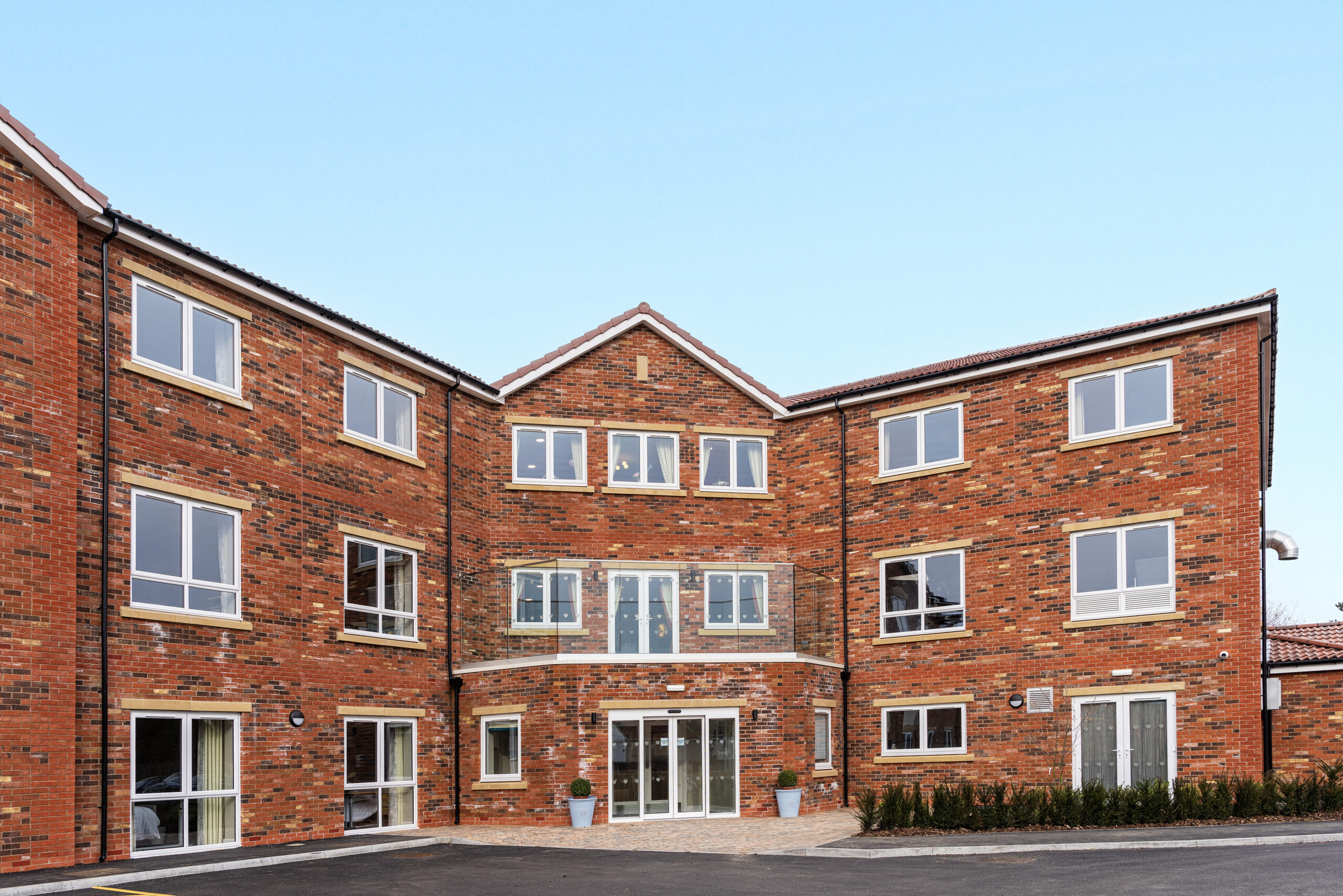
For more information about how Sleaford Hall Care Home can support you or your loved ones in making this vibrant town your new home, contact us directly to arrange a visit. Experience first-hand the exceptional care and community spirit that make Sleaford Hall an outstanding choice for senior living.
Please let us know how we can contact you and a suitable time to get in touch.